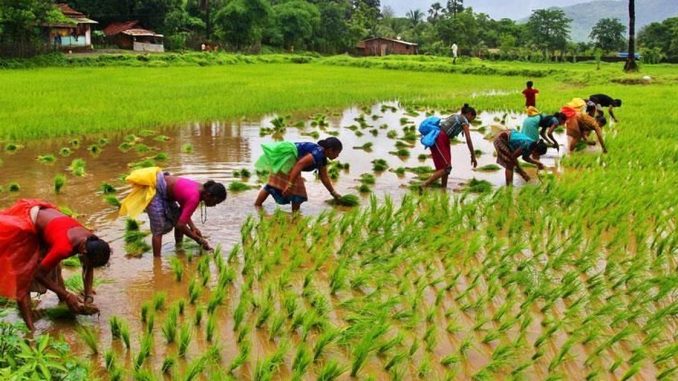- India can corner more than 45 per cent of the global rice exports.
- In February, the Andhra government allowed the use of an adjoining deepwater port at Kakinada for rice shipments.
- In 2019, India exported rice worth 7.1 billion dollars, accounting for 32 per cent of the global rice export.
- India is set to increase its share from 32 per cent in 2019 to 45 per cent in 2021 and hopes to sustain this for a long time.
In the last two years, rice exports from India have grown exponentially. Especially after the pandemic, when rice production suffered in many countries due to environmental and supply chain issues, India came forward to feed the world’s insatiable hunger for rice.
As per reports, in the calendar year 2021, India can corner more than 45 per cent of the global rice exports, which is more than the market share of the next three – Thailand, Vietnam, and Pakistan – exporters combined.
“Along with traditional buyers, this year China, Vietnam and Bangladesh are also making purchases from India,” said Nitin Gupta, vice president of Olam India’s rice business.
India’s exports in 2020 jumped 49% from the year before to a record 14.7 million tonnes, as shipments of non-basmati rice spiked 77% to a record 9.7 million tonnes. India is on course to dominate the global rice trade in 2021 as the new port capacity boosts shipment potential.
Earlier, rice export was facing shipment issues because Kakinada Anchorage was the only port facility to handle the rice export. In February, the Andhra government allowed the use of an adjoining deepwater port at Kakinada for rice shipments. And this has solved some shipment issues but, there is scope for further improvement because the deepwater port still does not have the infrastructure to handle large volumes.
Given the fact, most of the rice-producing countries are facing one issue or the other in production, India’s rice would continue to be in demand in the upcoming seasons and the government must solve the supply chain issues as early as possible.
In 2021, non-basmati rice shipments could nearly double from a year ago to 18 million tonnes, while premium basmati rice exports are seen steady at 4 million tonnes, Gupta said.
India is the world’s largest producer as well as exporter of rice. In 2019, India exported rice worth 7.1 billion dollars, accounting for 32 per cent of the global rice export. It was followed by Thailand, the United States, Vietnam, Pakistan, China, and Italy. In 2020, the rice prices in countries like Vietnam and China have reached so high that even these countries importing rice from India.
In 2020, most of the countries around the world fell short of rice and India came forward to feed them. Countries like Vietnam and Thailand which traditionally have been powerhouses of rice exports are now bound to import the grain from India. And with this, the country has created a long-term market for its rice around the world. The African market, which China was trying to snatch from the Indian exporters, has become a long-term market for the country because in their tough times India came forward to feed them while China halted the exports all of a sudden.
Moreover, the Indian agriculture sector, which has been suffering from low commodity prices globally, will revive and the farmers of the country are all set to witness an exponential increase in their incomes.
India is set to increase its share from 32 per cent in 2019 to 45 per cent in 2021 and hopes to sustain this for a long time. This is a golden opportunity for India to monopolize the global rice market as this will immensely benefit the Indian rice cultivators, as well as, the macro-economy of the country.
